 No, she's not gold. She's something far better. 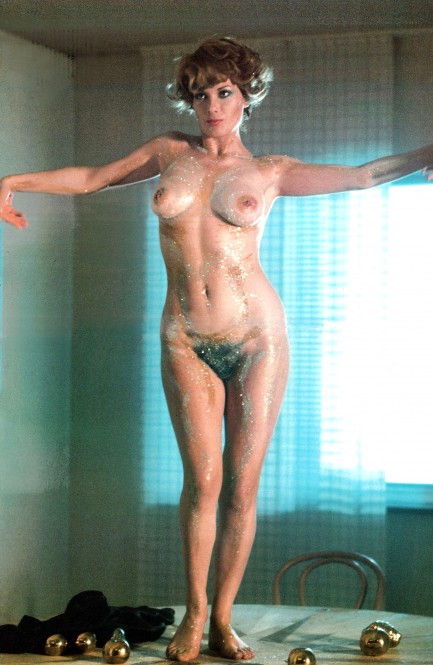
This Christmas themed image of Algerian born Italian star Edwige Fenech was made in 1976 while she was filming the comedy Cattivi pensieri, known in English as Evil Thoughts. She actually does in the film exactly what you see here, posing and dancing on a table while covered in holiday glitter, before being whisked off to bed by co-star Luc Merenda for some hazy focus softcore sex. Don't let that entice you into watching the movie, though. Fenech is a wonder, but she's done far better stuff.
 Sinatra and company swarm Las Vegas and try to escape with the cheese. 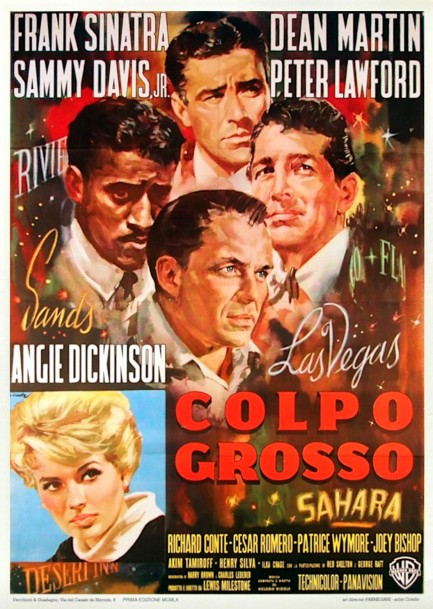
Above: an alternate poster for Colpo Grosso, aka Ocean's Eleven, to stand alongside the version we showed you last year. This, like the previous effort, was painted by Averado Ciriello. We talked about the movie and, long story short, it doesn't live up to the legend of its stars, but in the end you can't really knock the Rat Pack. They were ahead of their time.
 Rise by the camera, fall by the camera. 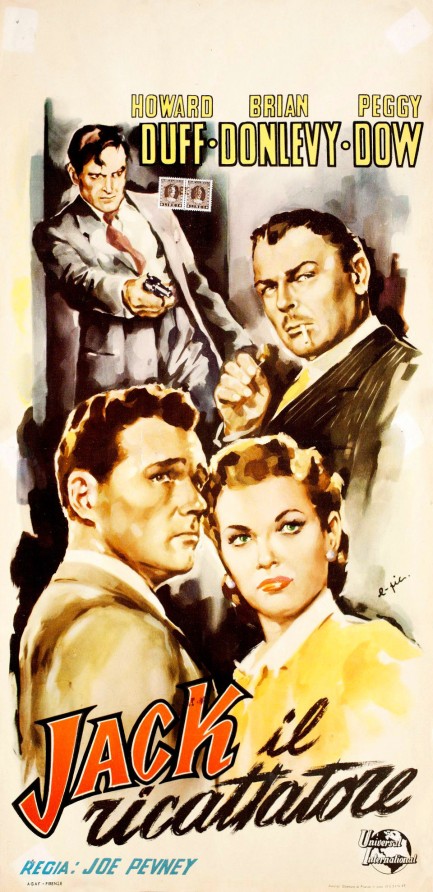
Above is a promo poster for the 1950 drama Shakedown made for the Italian market, where it was called Jack il ricattatore, or “Jack the blackmailer.” It stars Howard Duff as a photographer whose ambition pushes him across the line into criminality. We talked about it a while back. The poster is signed by an artist we can't identify—it looks like “e-pic.” We've seen other work by this person, but we don't have a real name or any other biographical info. This is a nice effort, so we'll an eye out.
 There's no better place to try something new. 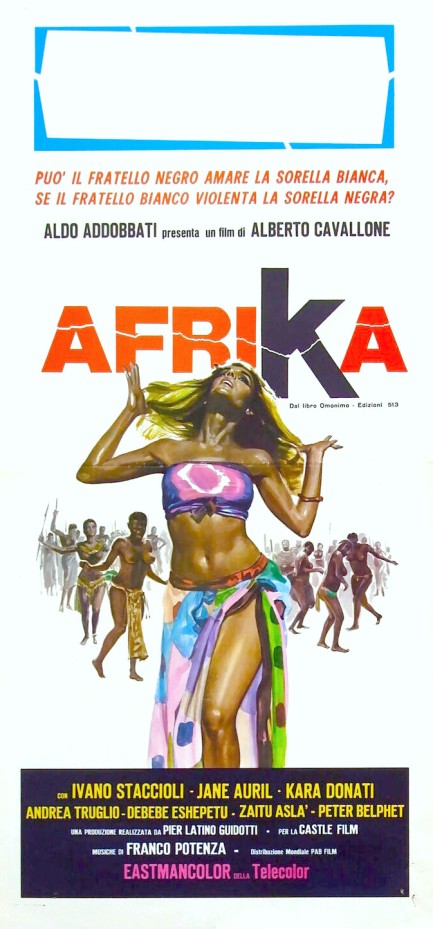
This is an interesting but uncredited Italian poster for the Alberto Cavallone directed and written Africasploitation flick Afrika (clever name, right?), which premiered in Italy today in 1973. By now you know exactly what to expect. What's amazing about these set-in-Africa movies, whether Italian, German, British, French, or what-have-you, is that they portray the continent as lawless and cruel (cue gratuitous shot of ox being decapitated) in a way that's bemusingly lacking in self-awareness coming from cultures that murdered one-hundred million inhabitants of those lands in the pursuit of profit.
On the lighter side, if we'd been customs agents anywhere in the tropics during the 1970s, we'd have taken aside every white arrival, looked over their paperwork, and said with a straight face, “It indicates here you boarded the flight with your usual inhibitions, but I notice you don't seem to have any with you now.” If only we had a time machine. With luck we'd have “processed” Anita Strindberg and Yanti Somer. At this point we accept whites-in-the-tropics movies as cinematic exercises in behavioural guardrail smashing. Sometimes those exercises are actually good, loaded with cliché though they may be. However Afrika, while suffering from the same old blind spot, attempts a serious story with a modicum of depth.
Set in Ethiopia, it's about a painter played by Ivano Staccioli who's tempted to stray from his wife when he meets a handsome gay college student played by Andrea Traglia. The studious and poetic Traglia is bullied in school, even raped at one point, and finds sympathy and understanding with Staccioli, and a job as his live-in secretary. This is not an easy household in which to live because its occupants are decadent and neurotic. Staccioli and Traglia's relationship is the sanest thing going on, but needless to say, it will lead to trouble and tragedy. This is all framed by a murder-or-suicide and police investigation, which means the central drama of a forbidden gay affair is told in flashback during interrogations.
We appreciated Cavallone taking a swing at a serious drama, and we enjoyed seeing Maria Pia Luzi, one of Italy's many exploitation stars (Women in Cell Block 7, White Slave Ship), given a chance to act rather than strip, but we can't call the movie good. It isn't the performances—everyone does pretty well in that department, considering the level of writing. It's just that the film is portentous and uninvolving. Take away the anti-Africa bias and it's a noble attempt at important subject matter, but in cinema you don't get points for trying. In our opinion you can give Afrika a pass.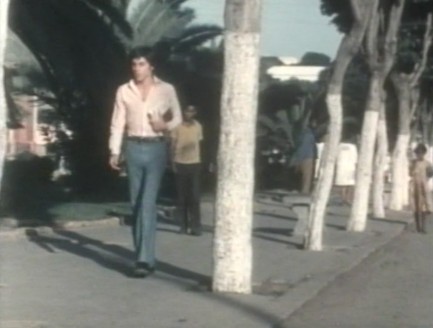  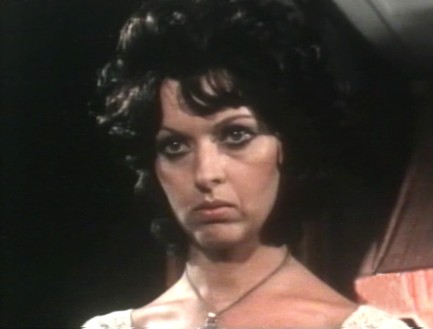 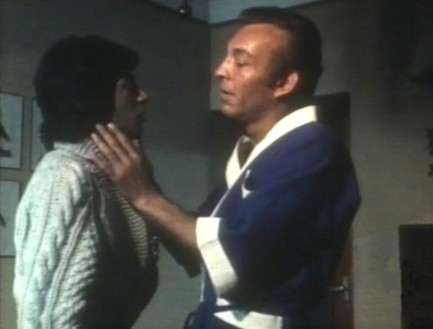  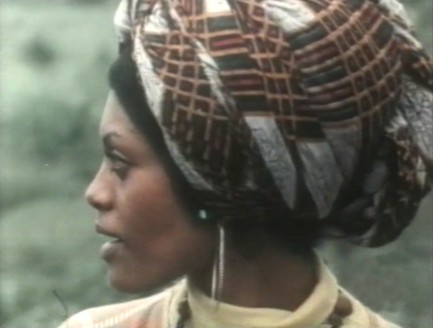 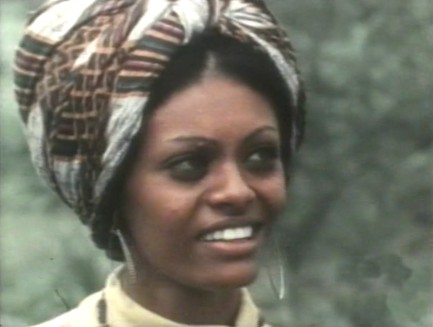 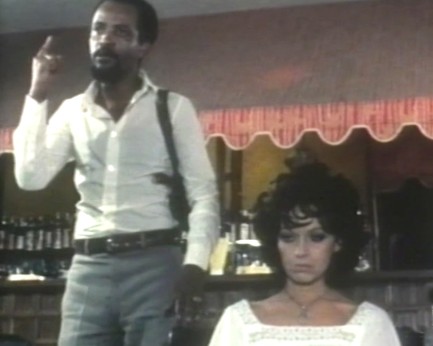 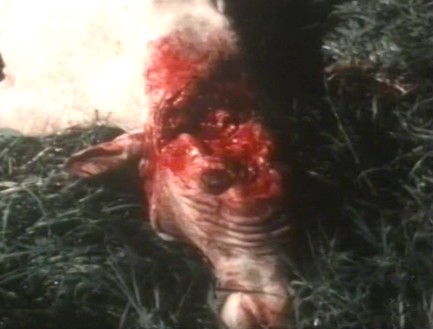 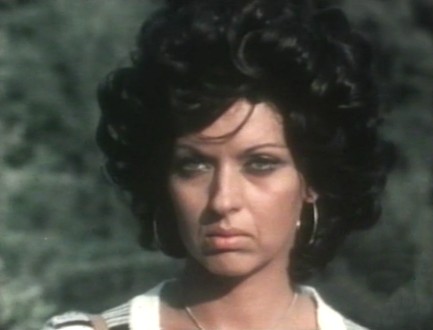 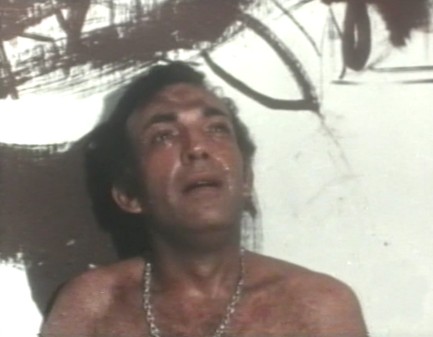
 Wild life abounds on sexploitation safari. 
This free-spirited poster was made for the sexploitation flick Africa Excitaction, which was originally French/Italian made and realsed in the U.S. as Jungle Erotic. The main brain behind the production was Polish writer-director Zygmunt Sulistrowski, who also stars under the name Don Power, because, if you're gonna write and direct a horny epic, it might as well be you doing to grinding and gyrating. Even simulated sex can be fun—so we hear. Zygmunt didn't star as himself, but as Darr Poran. In addition, the listed actresses, Karen Roche and Mary Alexander, were credited as Carrie Rochelle and Alice Marie. It almost seems as if nobody wanted their names on this movie.
Plotwise, there's nothing complex here. Zygmunt takes two models and his amphibious car to Africa for an extended photo session and some employer-on-employee al fresco lovin'. That may sound fun, but the movie is basically a total loss. It's not coherent, and nobody can act. But—and there's always a but—it's a sexploitation flick, which means all it really needs is to deliver scenery, skin, and sin. The first comes from shooting in Tanzania and Uganda, the second is provided by co-stars Rochelle and Marie, and the third—well, there's plenty of softcore writhing. So in the end, you win. Africa Excitaction has no precise premiere date, but it debuted in 1970.
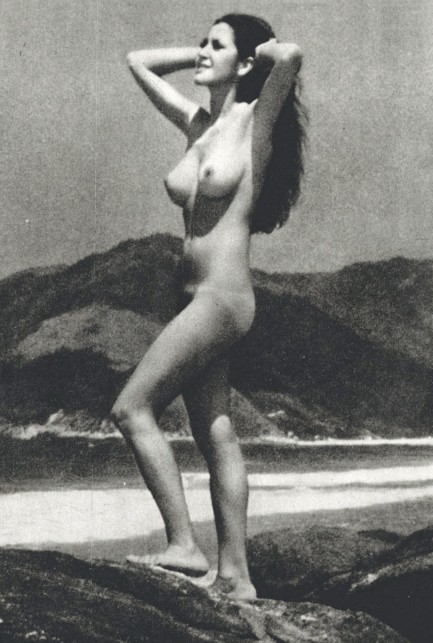 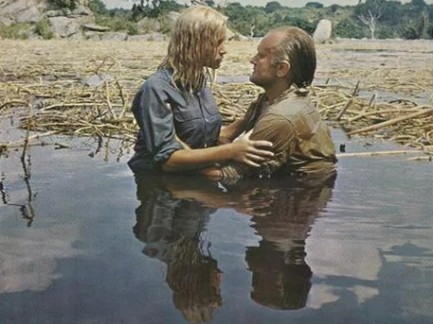 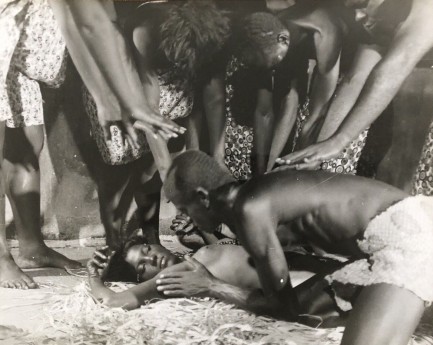 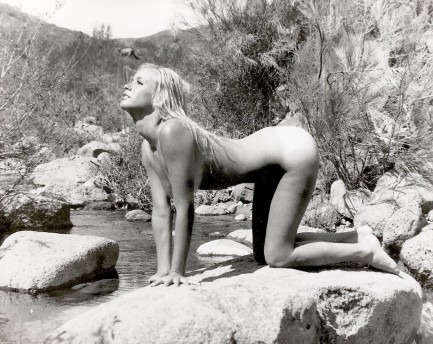 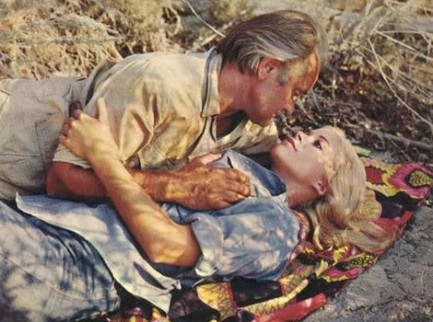 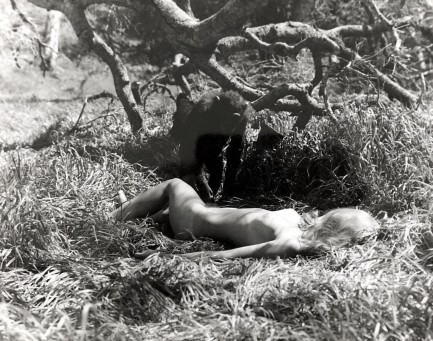 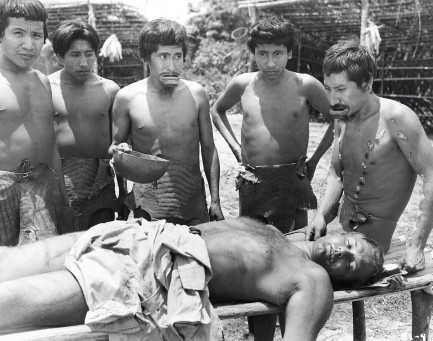 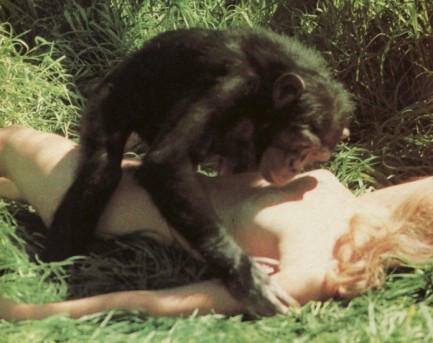 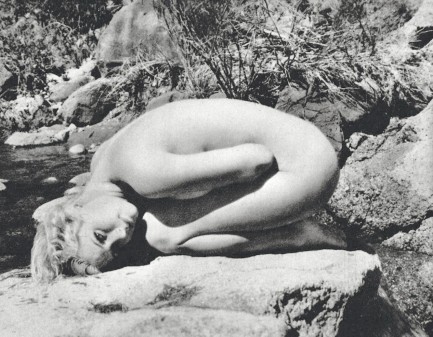 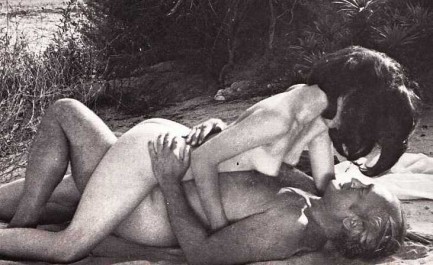  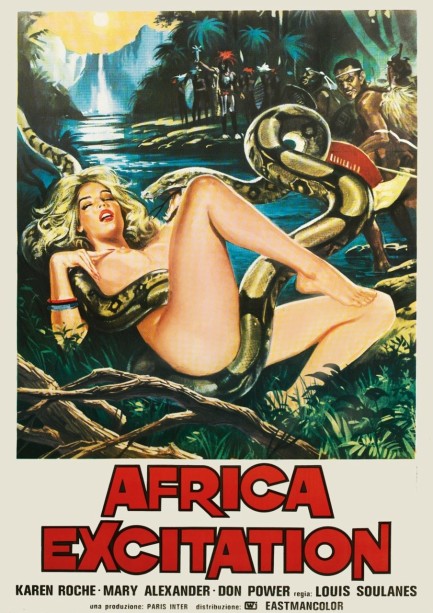
 He's 111 times better than 007—in the filmmakers' dreams. 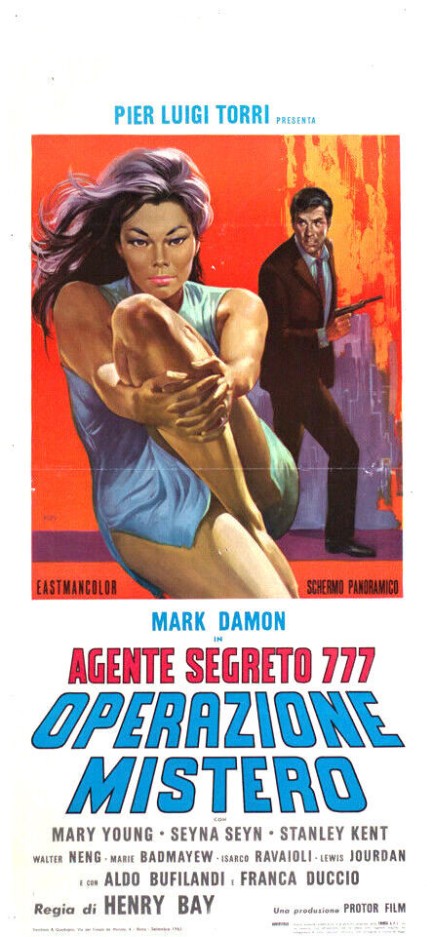
Here you see a poster for the Italian spy movie Agente segreto 777 - Operazione Mistero, known in English as Secret Agent 777. This is an alternate promo. Like the first one we showed you, it was painted by Mario de Berardinis. Sadly, the movie is extremely not great, but the other poster is. Check it out here.
 Okay, Emanuelle nera, scene seventy, take two. And, guys? Dial it back a little—this is an r-rated movie. 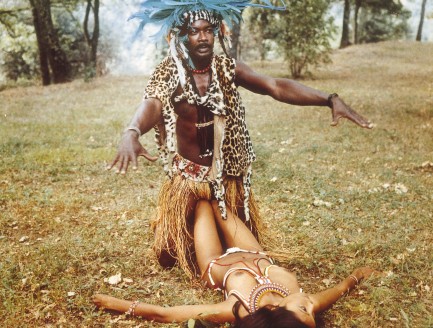
This fun production photo shows Javanese actress Laura Gemser and U.S. actor Don Powell in a grassy swatch somewhere in Kenya about to shoot a scene from their Italian made sexploitation epic Emanuelle nera, or Black Emanuelle, which premiered today in 1976. Feel free to read more about the movie here. Long story short, it's not good, but it's sure fun to watch. In the photo we love how Gemser has her knees fully in Powell's nuts. We imagine director Bitto Albertini: “Closer, Don. Get closer.” Powell: “This is as close as I can get without turning into a soprano.” Gemser: “I know the movie might automatically get an X from the ratings board if I open my legs, but Don and I have already rehearsed it that way a bunch, so why don't we try it?”
And now it's time for another real life Pulp Intl. story. Back when PSGP was working for Playboy he had a film producer friend in the softcore realm who needed extra crew one night for one of his productions. Such films often used porn actresses, and in this case there was a well known Russian performer who was booked to do a love scene. While in softcore films the actors often wore what were essentially tiny nylon hose over their units, and the actresses wore what were basically gigantic band-aids over their tender parts, it was always the performer's choice, and sometimes, for comfort reasons or whatever—with mutual consent—they didn't bother. This was obviously before the era of intimacy coordinators.
Anyway, came time to shoot a fake oral sex scene with the actress on her knees and the actor not wearing a stocking on his dick, and when the camera began rolling the Russian star began working her magic on the actor for real. He was surprised, clearly, but what could he say? He looked around confused, but made no noises about stopping the action. The director, who after about ten seconds realized what was happening, sort of shook his head and said, “Cut. Cut. Uh... [actress name] we won't be needing any of that today.” The entire set broke up in laughter. We're not suggesting anything like that happened between Gemser and Powell. It's just that the photo brought to mind that amusing story. We've got a million of 'em.
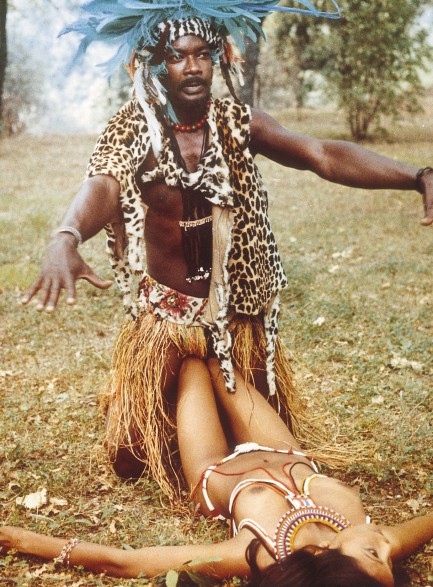
 Cold War spies make waves in the City of Canals. 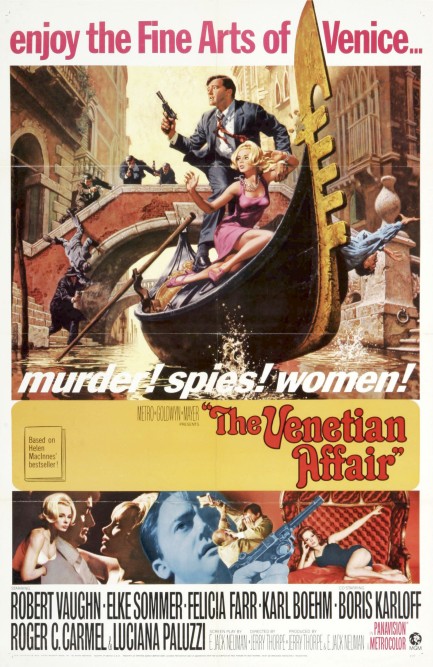
The Venetian Affair, which premiered today in 1966, has a rather interesting promo poster. It was painted by U.S. artist Frank McCarthy, who was big in paperback covers early in his career, moved into high-budget movie promos such as James Bond posters, and finally made a mark in realist fine art. We love this piece from him. There's a lot going on. If you check out his effort for You Only Live Twice here you'll see how dense and chaotic his work could be, same as above, where he has people falling off the bridge, off the gondola, and guns being brandished everywhere. In addition, his likenesses of the movie's stars are good. He was a major talent.
The first observation you might make while watching The Venetian Affair is that it would be impossible to make a similar movie in that city today. Nearly four million tourists visited Venice in 2022, making nearly every street—and certainly every site of special historical note—like the mass exodus from a just-completed football game. With that level of humanity about, closing parts of the city or main squares—while maybe possible—would not be practical or economical.
But The Venetian Affair was made back when quiet streets and dark corners existed. Old world architecture always makes for a good spy movie backdrop. That's exactly what you get in this adventure about a mind control drug being used to foment conflict between the U.S. and U.S.S.R. Robert Vaughn stars as a former CIA agent who was fired after he married Elke Sommer, who was suspected of being a double agent. Vaughn never found out whether that was true because he and Sommer were torn apart by turbulent events. But when a bomb blows up a Venice political conference and Sommer is thought to be involved, the CIA drags Vaughn back into its clutches to find Sommer, as well as the crucial clue that might explain the bombing.
Vaughn is a cool and composed actor, any movie with Sommer is one we'll watch, and co-stars Felicia Farr, Luciana Paluzzi, Ed Asner, and the venerable Boris Karloff are all enticements, but we can't say The Venetian Affair is a scintillating example of a Cold War spy flick. It's such a fertile sub-genre, one that produced some of the best movies of 1950s through 1970s. Even against the beautiful Venice backdrop it mostly falls flat due to a screenplay that never hits any highs. But that doesn't mean you shouldn't watch it. Though it lacks highs, it also lack any serious lows. You can spend your time worse ways. Plus—Sommer. What more do you need?
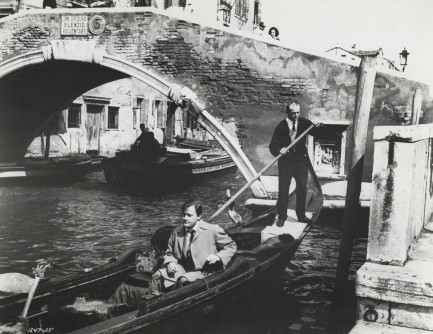 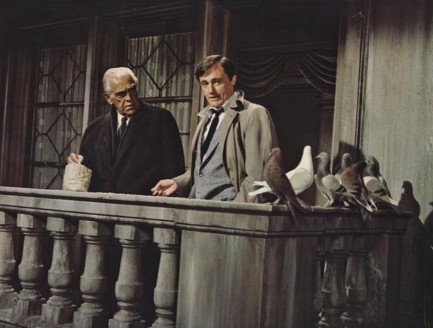 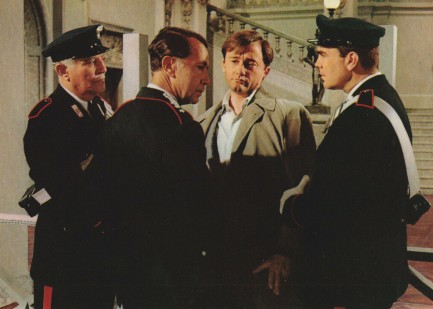 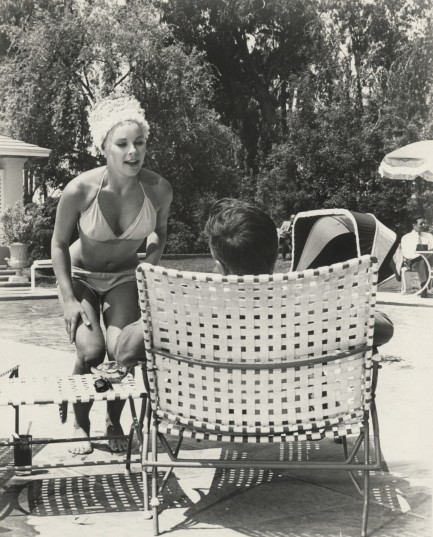 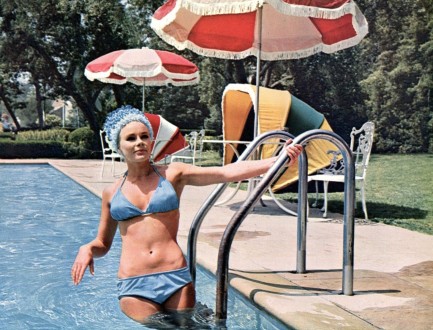  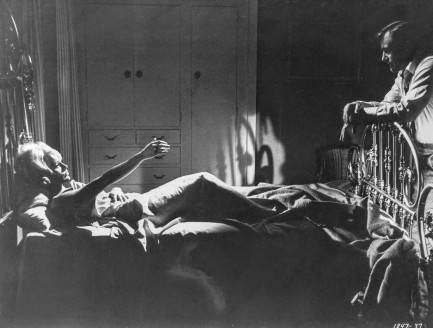 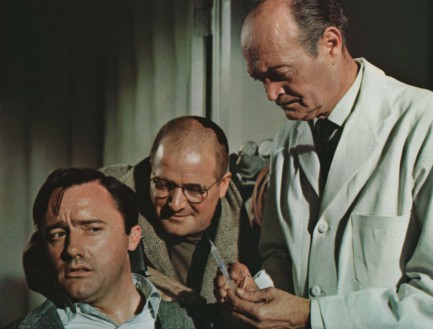 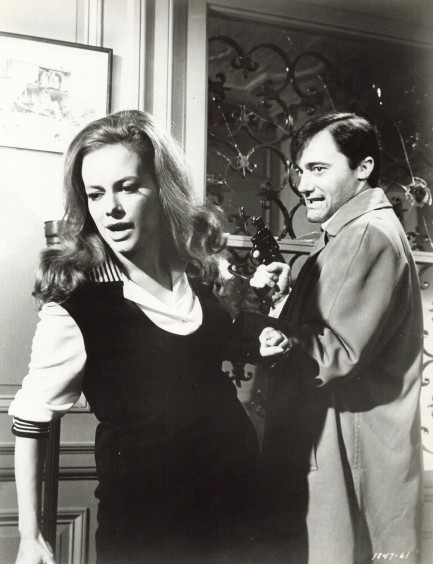 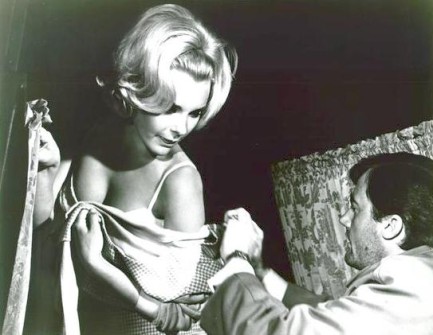 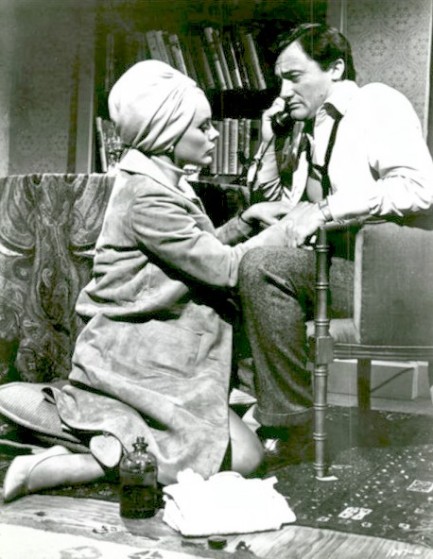 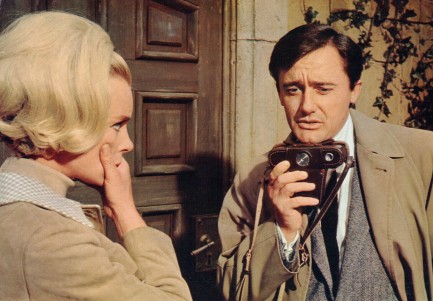 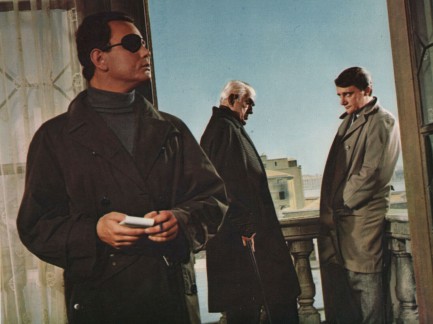 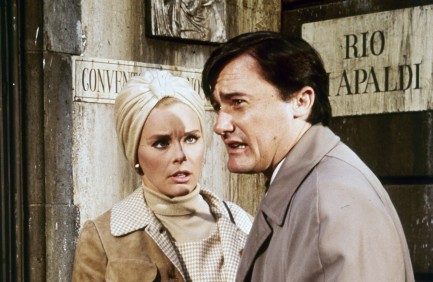 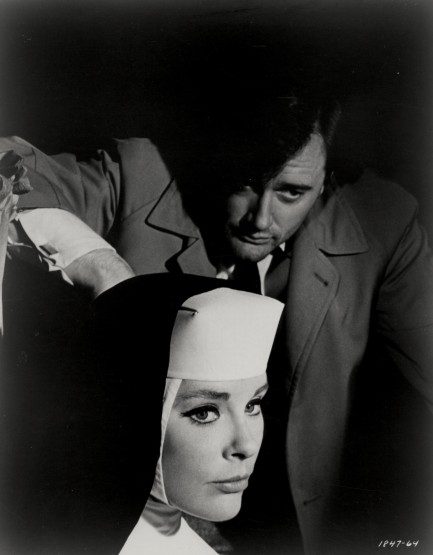 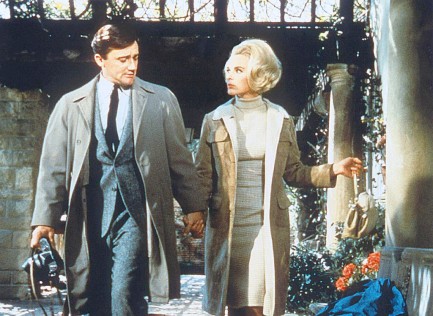 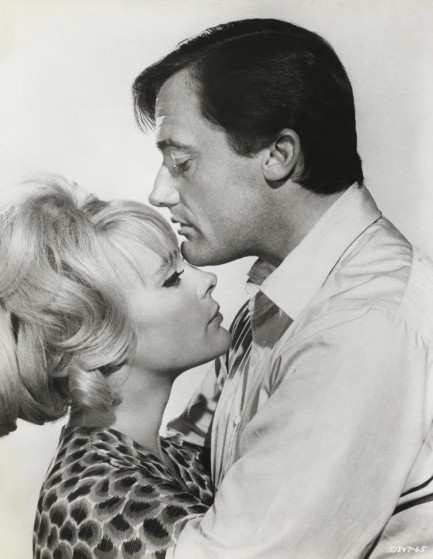 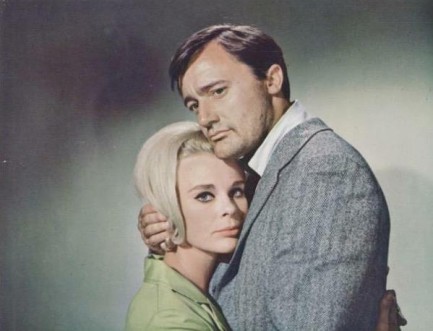 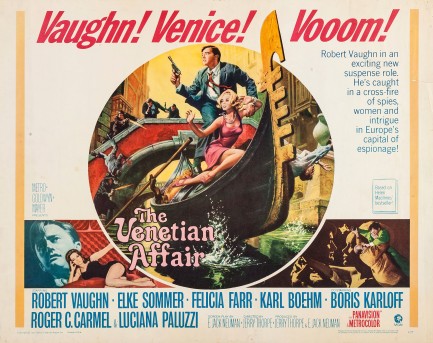 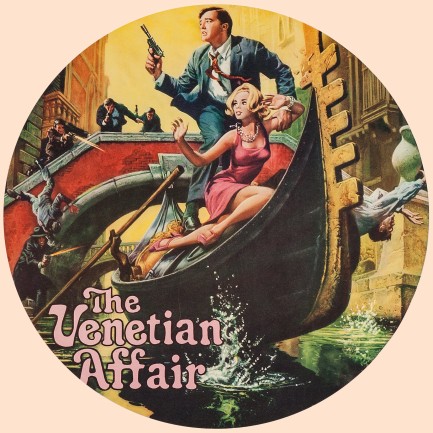
 Did somebody order a spaghetti western with extra cheese? 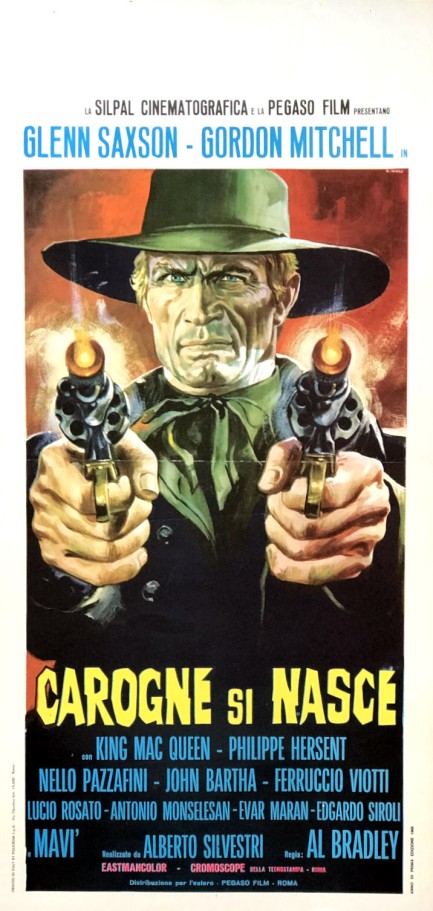
We take every opportunity we can to show you the work of Renato Casaro, even when it's used to promote a movie as bad as Carogne si nasce. Casaro painted a lot of spaghetti western posters but this one is a bit more intense than most. There's a reason for that—the character he painted was intense. The movie is known in English as Cry of Death, and it deals with conflict that erupts between squatters and ranchers in fictional Houstonville, Texas, and the marshal—Glenn Saxson—who first tries to stay out of it, but later chooses a side when he realizes that inside the land rights struggle is a deeper problem regarding someone's secret past and corruption amongst the town bigwigs. This is one cheap-ass movie. The budget is exemplified by a barroom brawl during which a character is shoved through a cardboard wall. Every castmember is a b-level actor at best. And the script—don't even bring up the script. It's like it was accidentally shot full of holes during one of the gunfights. But we'll give this cheeseball movie one thing—the main bad guy is amazing. He's played by ex-bodybuilder Gordon Mitchell, and he looks like a demon wearing bronzer. Spaghetti western producers were good at casting villains, and Mitchell fits the tradition with a capital V. Otherwise, this flick—even with its final act twist—is nowheresville. Carogne si nasce premiered in Italy today in 1968
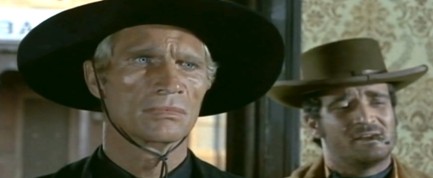 That's right. I'm the bad guy. You never guessed, did you? That's right. I'm the bad guy. You never guessed, did you?
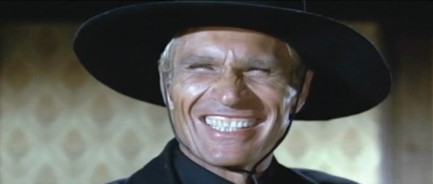 I'm pure evil, but I can smile winningly. See? I'm pure evil, but I can smile winningly. See?
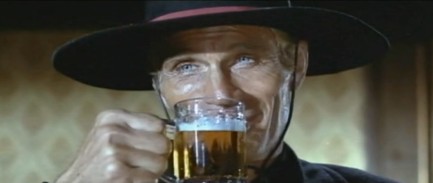 Though I'm from hell and consume only souls, I can mimic human rituals such as drinking beer. Though I'm from hell and consume only souls, I can mimic human rituals such as drinking beer.
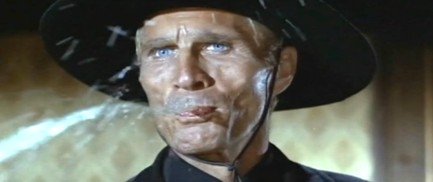 But I don't mimic swallowing it. My master should serve this pisswater to the thirsty wretches in his realm. But I don't mimic swallowing it. My master should serve this pisswater to the thirsty wretches in his realm.
 Friends have told me I need to be more upbeat. So I got new friends. 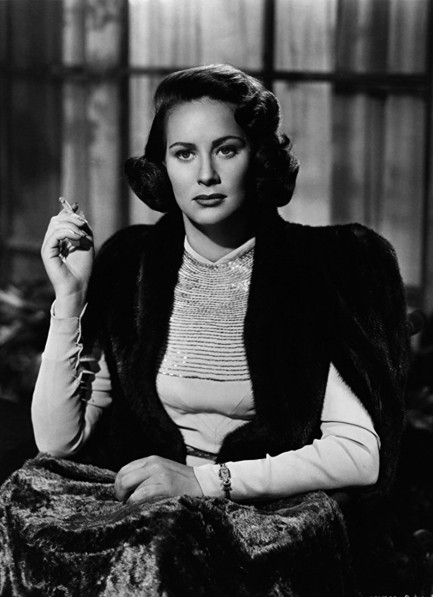
Alida Valli was born in Pola, Italy, a place that's now part of Croatia, back in 1921, and was acting in Italian movies by 1935. She eventually became a global star and racked up more than one hundred film credits, including in The Paradine Case, The Third Man, Les Yeux san visage, aka Eyes without a Face, and The Cassandra Crossing. The shot you see here was made for her 1950 drama Walk Softly, Stranger.
|
 |

The headlines that mattered yesteryear.
1986—Otto Preminger Dies
Austro–Hungarian film director Otto Preminger, who directed such eternal classics as Laura, Anatomy of a Murder, Carmen Jones, The Man with the Golden Arm, and Stalag 17, and for his efforts earned a star on Hollywood's Walk of Fame, dies in New York City, aged 80, from cancer and Alzheimer's disease. 1998—James Earl Ray Dies
The convicted assassin of American civil rights leader Martin Luther King, Jr., petty criminal James Earl Ray, dies in prison of hepatitis aged 70, protesting his innocence as he had for decades. Members of the King family who supported Ray's fight to clear his name believed the U.S. Government had been involved in Dr. King's killing, but with Ray's death such questions became moot. 1912—Pravda Is Founded
The newspaper Pravda, or Truth, known as the voice of the Communist Party of the Soviet Union, begins publication in Saint Petersburg. It is one of the country's leading newspapers until 1991, when it is closed down by decree of then-President Boris Yeltsin. A number of other Pravdas appear afterward, including an internet site and a tabloid. 1983—Hitler's Diaries Found
The German magazine Der Stern claims that Adolf Hitler's diaries had been found in wreckage in East Germany. The magazine had paid 10 million German marks for the sixty small books, plus a volume about Rudolf Hess's flight to the United Kingdom, covering the period from 1932 to 1945. But the diaries are subsequently revealed to be fakes written by Konrad Kujau, a notorious Stuttgart forger. Both he and Stern journalist Gerd Heidemann go to trial in 1985 and are each sentenced to 42 months in prison. 1918—The Red Baron Is Shot Down
German WWI fighter ace Manfred von Richthofen, better known as The Red Baron, sustains a fatal wound while flying over Vaux sur Somme in France. Von Richthofen, shot through the heart, manages a hasty emergency landing before dying in the cockpit of his plane. His last word, according to one witness, is "Kaputt." The Red Baron was the most successful flying ace during the war, having shot down at least 80 enemy airplanes. 1964—Satellite Spreads Radioactivity
An American-made Transit satellite, which had been designed to track submarines, fails to reach orbit after launch and disperses its highly radioactive two pound plutonium power source over a wide area as it breaks up re-entering the atmosphere.
|

|
|

It's easy. We have an uploader that makes it a snap. Use it to submit your art, text, header, and subhead. Your post can be funny, serious, or anything in between, as long as it's vintage pulp. You'll get a byline and experience the fleeting pride of free authorship. We'll edit your post for typos, but the rest is up to you. Click here to give us your best shot.

|
|






























































 That's right. I'm the bad guy. You never guessed, did you?
That's right. I'm the bad guy. You never guessed, did you? I'm pure evil, but I can smile winningly. See?
I'm pure evil, but I can smile winningly. See? Though I'm from hell and consume only souls, I can mimic human rituals such as drinking beer.
Though I'm from hell and consume only souls, I can mimic human rituals such as drinking beer. But I don't mimic swallowing it. My master should serve this pisswater to the thirsty wretches in his realm.
But I don't mimic swallowing it. My master should serve this pisswater to the thirsty wretches in his realm.







































































